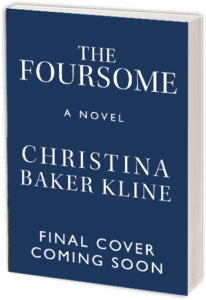 Bonnie Friedman writes about the lure of (and cure for) the endless novel:
Bonnie Friedman writes about the lure of (and cure for) the endless novel:
I just finished my first novel. This isn’t the first novel I tried to write. Before publishing a book of essays and then a memoir, I’d been a devoted fiction writer. I’d written hundreds of pages of two vast novels, one when I was in my twenties and one in my thirties. But this last one is the first novel I’ve finished. Those other novels were a great pleasure and torment to work on — I got to explore internal states that haunted me, and I got to wander amongst skeins of gossamer prose sticky as butterfly wings, and I got to understand (among other things) aspects of my childhood with my sister, who had been a grand volcanic, wounded girl. But I didn’t know how to finish either of the books I started.
They were all middle and no end. They were all sprawling, surging second act.
I didn’t know that I was allowed to figure out where my characters ought to end up, and then explore how they might get there. I didn’t know how conscious I was allowed to be during the writing process. I didn’t know that if I focused on one particular problem that a character was trying to solve, myriad others would snap into clarity.
I’d grown up reading experimental writers — Woolf, Stein, Barnes, Joyce — and really didn’t understand the least thing about novel structure. For me, reading a novel was a state of immersion. I read slowly, savoring the serif type and the glow of the linen page (I’m thinking of a certain paperback of Mrs. Dalloway that I was given for my 21st birthday, and which I read munching Mint Milanos and sipping sweet instant coffee from a tin). “How true!” I’d write in the margins with a coal-soft pencil. I’d assumed that to write a book one must simply get immersed. And I liked immersion. It was less scary than decision. “Discover, discover!” I told myself — the mantra of writing schools in those days.
I wrote in order to set on the page certain internal states. I wanted to see what they meant. I didn’t yet know how useful it is to give one’s traits to a character who is a bolder version of oneself. I didn’t yet know that a novel must involve a character who changes by the end. At a certain point I recognized with this last novel that it too might go on forever accumulating pages and becoming less and less publishable if I didn’t impose a bit of discipline on myself.
I bought screenplay writing books, playwriting books, and even a novel-writing book or two — those dreaded texts I was convinced would flatten all my originality, what there was of it, to mere formula. And all proved useful. I hadn’t understood that the effect that a novel creates isn’t the same as the technique used to create that book. Nor had I understood how entirely I merely loved the dream-state of adding to my novel.
Now what’s thrilling is pacing through other people’s novels and seeing how they’re hinged and braced. Noticing the decision points. And allowing my own characters to make decisions.
Gone — I hope — is some of that sticky enthrallment that kept me caged in mammoth manuscripts for so long. Each writing temperament, I’m convinced, has its own perils. The peril of mine was to remain for epochs in a prolonged inchoate state of mazy inconclusiveness. The heroine of my novel altered, as did I by writing her. Now I see a book as a device to discover more than one could have known beforehand. And that acquiring technique is essential. It is the artifice that, like eyeglasses, lets the world become clearer. I’m all for it now, when once upon a time it was anathema to me.
Bonnie Friedman is the author of the Village Voice bestseller Writing Past Dark, Envy, Fear, Distraction, and Other Dilemmas in the Writer’s Life, a widely anthologized book of essays. She is also the author of the memoir The Thief of Happiness: The Story of an Extraordinary Psychotherapy. Her essays have been included in The Best American Movie Writing, The Best Writing on Writing, The Best Spiritual Writing, and the Best of O., the Oprah Magazine.












